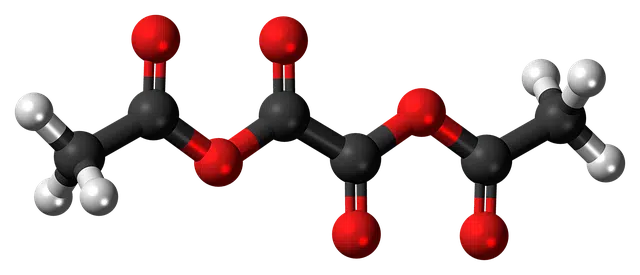
An anhydride is a compound formed by a nonmetal and oxygen.
The first thing to undertake in order to fully understand the term anhydride is to discover its etymological origin. In this case, we can say that it is a word of Greek origin that can be translated as "that has the appearance of having no water." It is a word that was formed from the sum of the following elements:
-The prefix «an-«, which is equivalent to «sin».
-The noun "hydros", which is synonymous with "water".
-The suffix "-ido", which can be determined to mean "having appearance."
What is an anhydride
The term anhydride may also be accented as anhydride . The concept is used in the field of chemistry to name the compound that is formed with a non-metal and oxygen and that, when it reacts with water, generates an acid .
Anhydrides are also called non-metal oxides or acid oxides . These are binary chemical compounds that arise when a non-metallic element combines with oxygen .

Carbon dioxide is an anhydride.
Some examples
An example of anhydride is carbon dioxide or carbon dioxide . This oxide has molecules composed of two oxygen atoms and one carbon atom (the non-metallic element), which are linked by double covalent bonds. When carbon dioxide reacts with water, it becomes an oxacidic acid known as carbonic acid .
Sulfur dioxide or sulfur dioxide is another anhydride. In this case, the chemical compound has one sulfur atom and two oxygen atoms. Sulfur is the non-metallic element; As for the product resulting from the reaction of this anhydride with water, it is called sulfurous acid .
Regarding the nomenclature of anhydrides, you can choose the traditional nomenclature (the name begins with the word "anhydride" and is then completed according to the oxidation states), the systemic nomenclature (depends on the number of atoms) and the Stocke nomenclature. (it starts with "oxide" , continues with the name of the element and ends with the oxidation state in Roman numerals and in parentheses).
acid anhydride
In the same way, we cannot forget what are called acid anhydrides, of which the following particularities can be highlighted:
-They are also called carboxylic anhydrides.
-They are the result of the dehydration of two molecules, or at least one in the intramolecular case, of carboxylic acid.
-They have the peculiarity that they are considered to be especially reactive.
-There are different types, especially the so-called mixed and symmetrical ones.
-It is established that when carrying out their nomenclature they will be called according to the acids of origin with the exception that the word anhydride will be established before them.
-Although they can be used in different areas, as a general rule, where they have the most value and presence is in the manufacture of medicines. Exactly by using this type of acid anhydrides, for example, the preparation of what is the drug commonly known as acetylsalicylic acid is undertaken.
